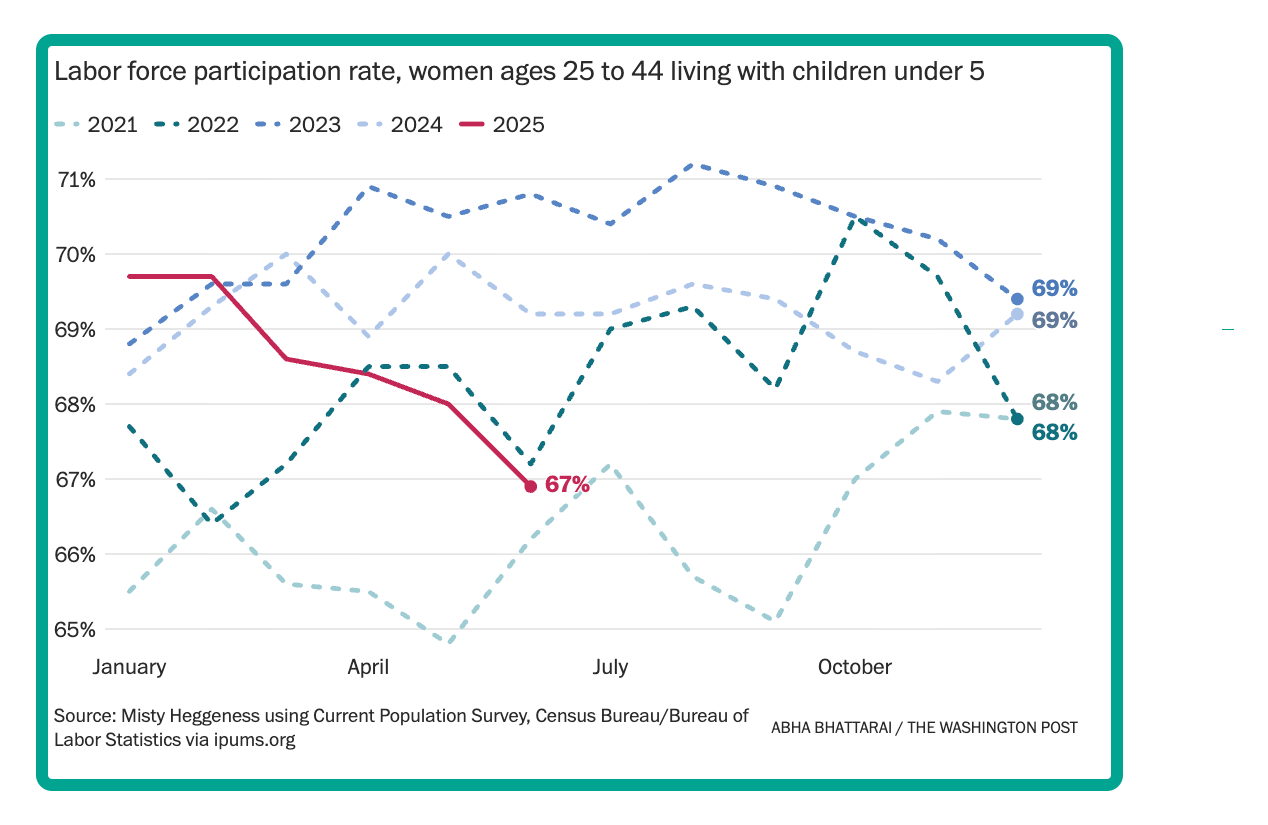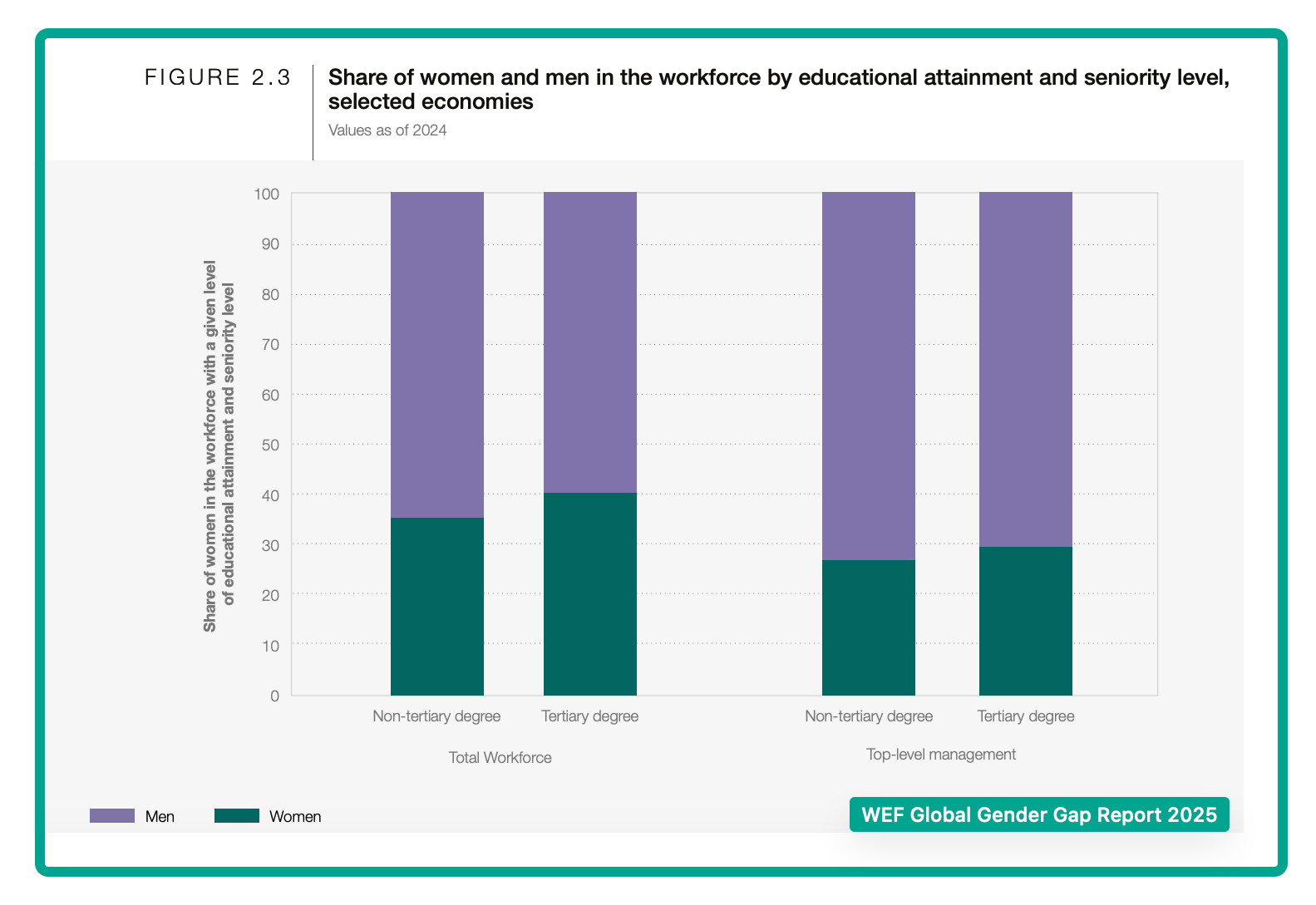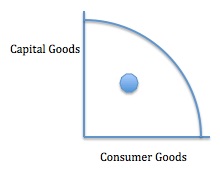
What a Free Good Really Costs Us
August 14, 2025
August 2025 Friday’s e-links: An “Unhedged” Podcast
August 15, 2025The workforce is losing young women.
Women in the Labor Force
Displaying a shrinking participation rate, working women, aged 25-44 with young children, have been leaving their jobs:

According to a University of Kansas economist, young women’s exodus from the labor force reverses the impact of the pandemic. During the pandemic, mothers with young children benefited from flexible in-the-office hours. Now, with a growing number of corporations requiring their employees to be in the office five days a week, those policies have returned to a more traditional tilt. Adding to the female leave-the-workforce trend, we can also cite federal government layoffs. Whether it’s changing office conditions or layoffs, needing the flexibility that parenting and caring for the elderly require, some women chose to become stay-at-home caregivers.
We should add that yes, some women prefer to remain at home with their young children. However, for those that do not, it became more difficult to combine caregiving with a job outside the home.
Women’s Human Capital
The 2025 Global Gender Gap Report tells us that women tend to be more educated than men. And yet, in the workplace, men occupy a larger share of leadership positions. As a result, the report suggests an inefficiency because the investment in human capital is insufficiently used at work:

Correspondingly, we can ask if offices that make it tougher for young women to work are creating the same inefficiencies.
Our Bottom Line: Production Possibilities Graphs
So yes, the result of a less welcoming work environment is the underutilization of women’s talents.
As economists, we can use production possibilities graphs (PP curves) to illustrate this economic reality and what it could be. With the dot representing now, and the line showing an economy’s potential, we see the impact of wasting women’s human capital:
My sources and more: Thanks to this Washington Post article for alerting us to young women’s participation rates in the United States. From there, it made sense to check the WEF Global Gender Report 2025 for all of the facts we could possible want (and more).
![econlifelogotrademarkedwebsitelogo[1]](/wp-content/uploads/2024/05/econlifelogotrademarkedwebsitelogo1.png#100878)




